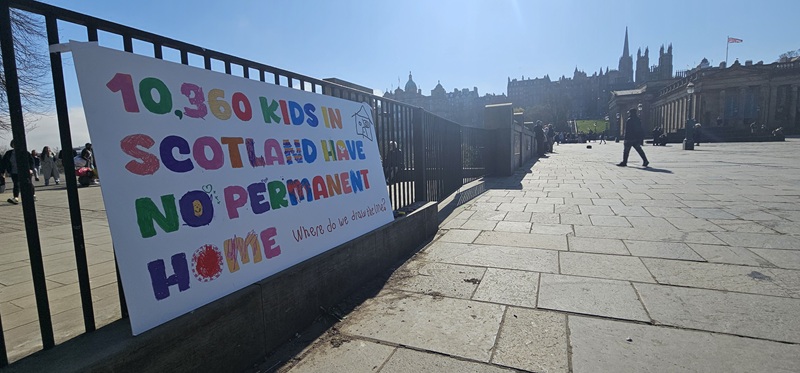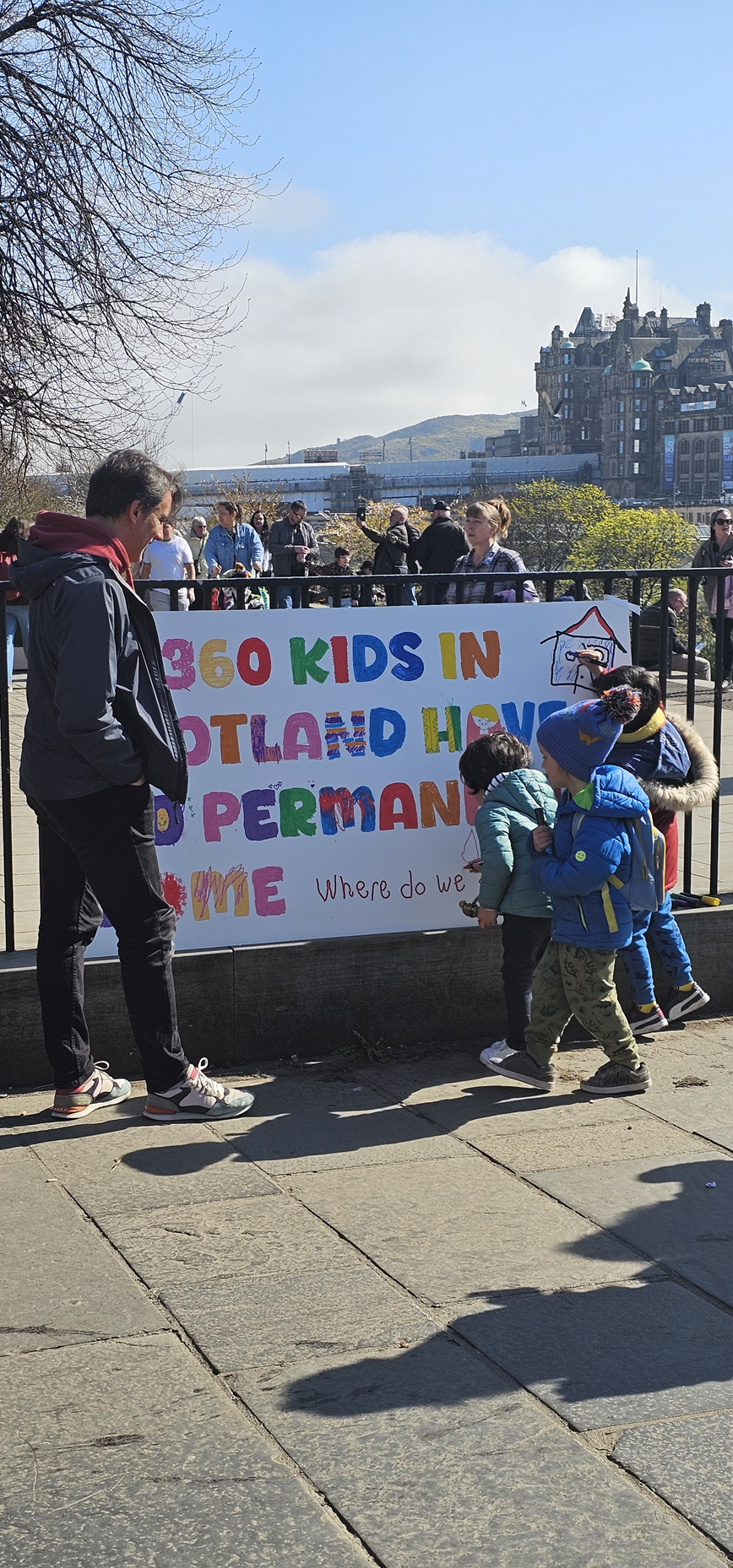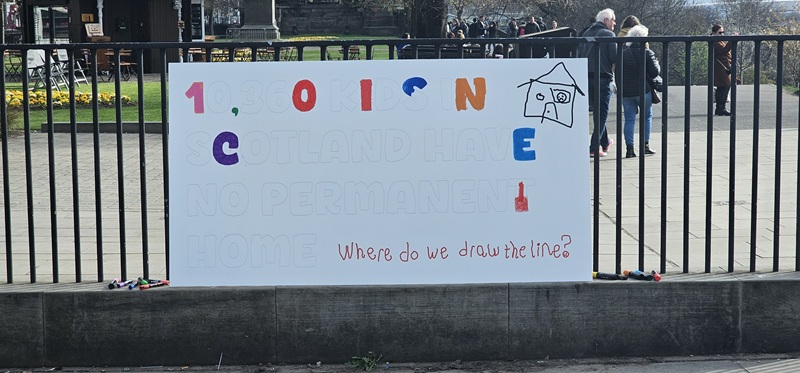Children help reveal stark reality of Scotland’s housing emergency

Children from across Edinburgh helped spread Shelter Scotland’s message about the impact of temporary accommodation with a demonstration in the city centre this week.
The youngsters were invited to take part and colour in a canvas to reveal the harrowing statistic that 10,360 children are living without a permanent home in Scotland.
This comes after the housing and homelessness charity published a report, In Their Own Words: Children’s Experiences in Temporary Accommodation, exposing the horrific conditions that many families are facing. Children spoke of living in fear, isolation and surrounded by vermin.
Shelter Scotland director, Alison Watson, said: “Our damning report shined a light on the horror many children are waking up to in unsuitable accommodation. When the number of children waking up without a forever home, is growing year on year, we need to ask, where do we draw the line? How many more children need to become homeless for the First Minister and Housing Minister to act?
“Warm words need to turn into urgent action. We need a housing emergency action plan from the Scottish Government. All levels of government need to commit to prioritising and investing in developing social housing to ensure everyone has a safe, stable and secure home.

“It has nearly been a year since the Scottish Government declared a housing emergency and after decades of underinvestment, the situation is clearly getting worse- not better. But this can change with more funding and social homes. Ministers and local authorities must work together to fix the broken and biased housing system.
“Failure to act is condemning thousands of children and families to wake up in dangerous conditions every day. When will enough be enough?”
Report secures EMA flexibility
The demonstration comes after the Scottish Government revealed it will strengthen the guidance to local authorities around Educational Maintenance Allowance (EMA), on the back of the findings of the report.
Researchers found that teenagers who were homeless faced having their EMA restricted as their school attendance was disrupted due to their housing situation. The report highlighted how children were missing school or were late for classes after they were placed in accommodation miles away.
EMA is a means-tested financial scheme available to students aged between 16 and 19 and those undertaking unpaid vocational or non-university academic learning in Scotland.

On April 3, the Scottish Government’s minister for higher and further education, Graeme Dey, confirmed that for students receiving EMA in 2025-26, there will be strengthened guidance on applying flexibility in attendance specifically for those who are experiencing homelessness.
Alison Watson said: “It is welcome news that EMA guidance will be strengthened to include flexibility, as we recommended in our report.
“Children living in temporary accommodation face regular upheaval and uncertainty. EMA can help support teenagers, offer them financial independence and the ability to continue their education.
“It was incredibly concerning to hear through our research that children experiencing homelessness risked losing out on this lifeline support through no fault of their own. We are pleased to see the Scottish Government take this decisive action to reduce the Temporary Accommodation Tariff that is hitting far too many families.
“However, this one change is not enough to support the 10,360 children trapped in often unsuitable temporary accommodation. We still have not heard any new commitments from the First Minister or Housing Minister to tackle the broken and biased housing system.
“We need radical and urgent change to get these children out of living in fear and into safe, secure forever homes. The way to do this is with more social homes.”









